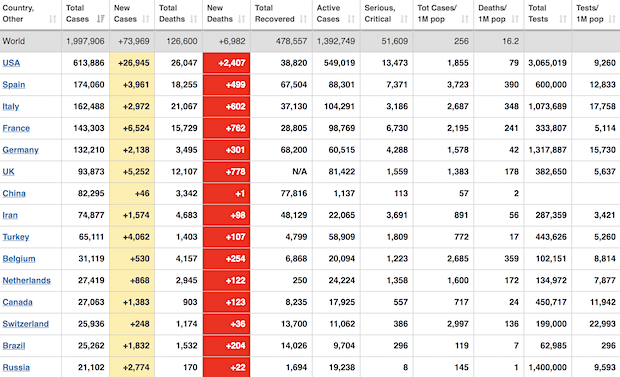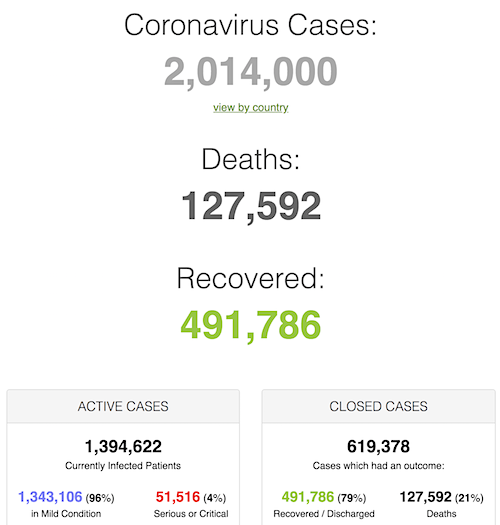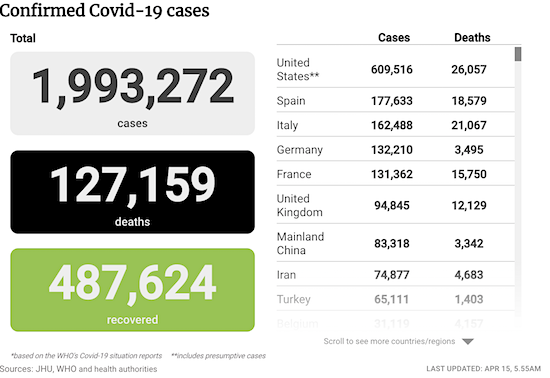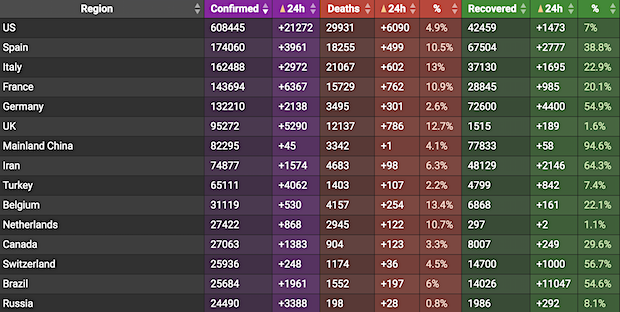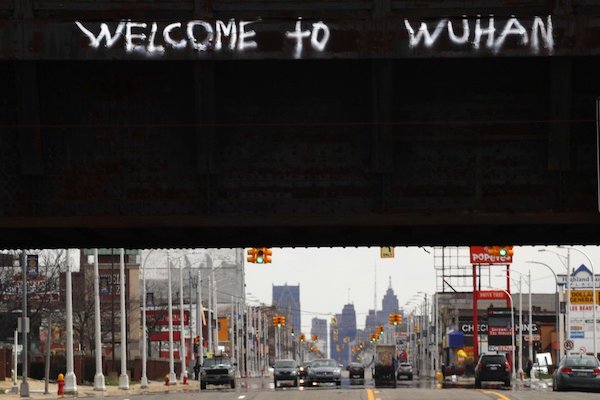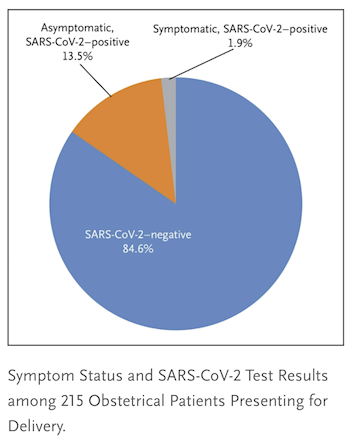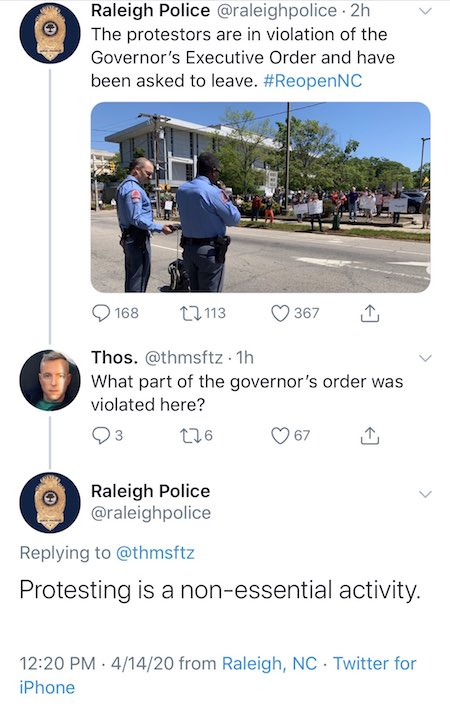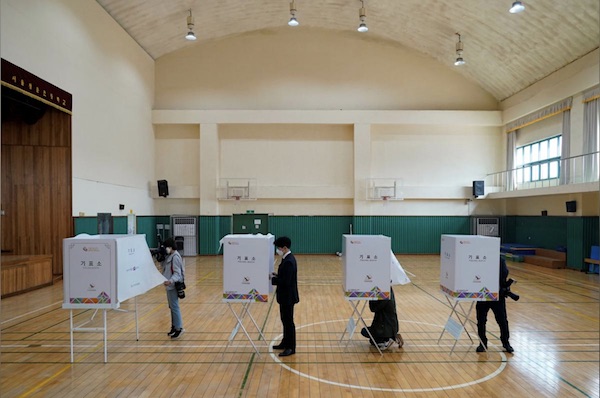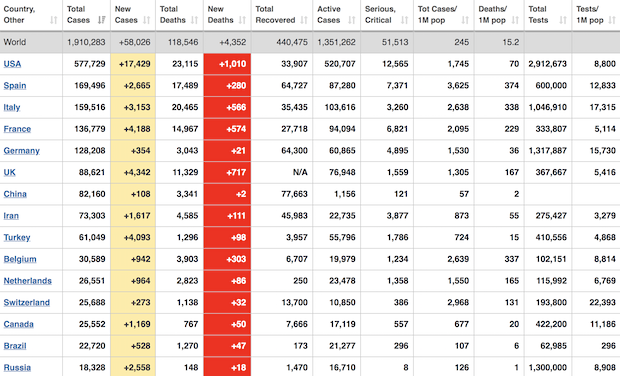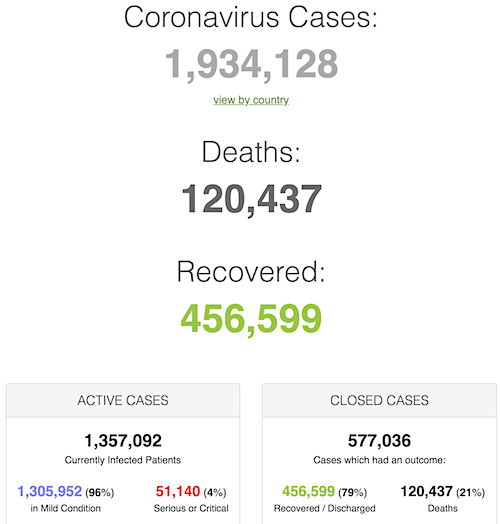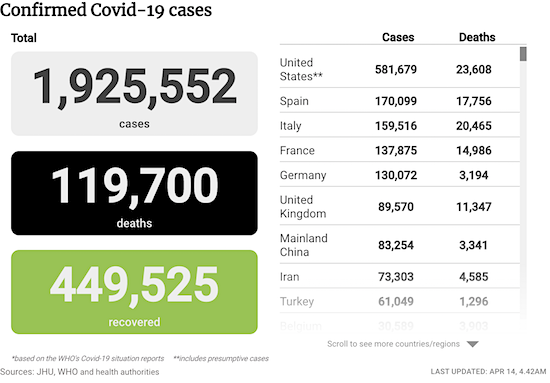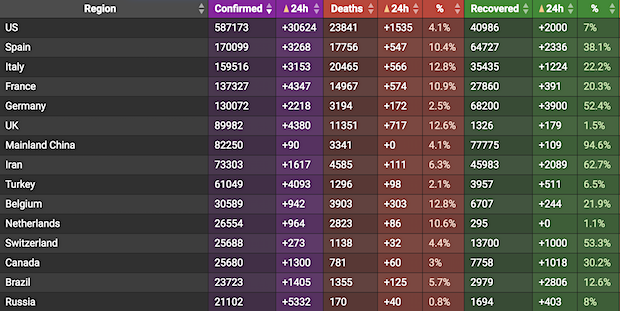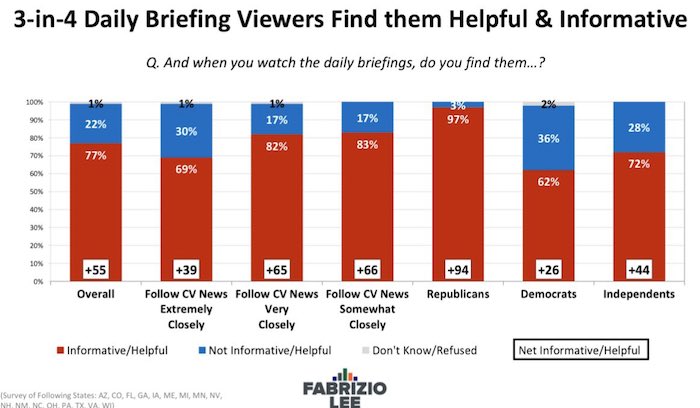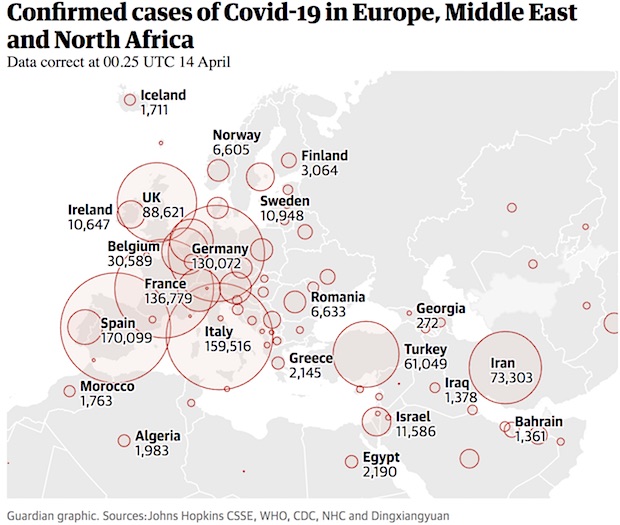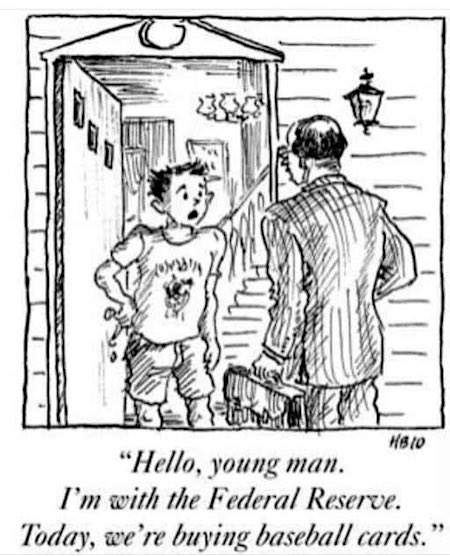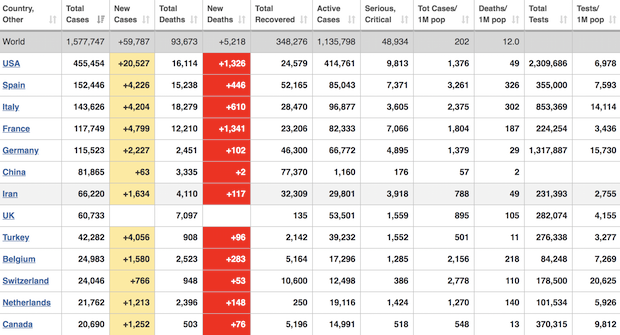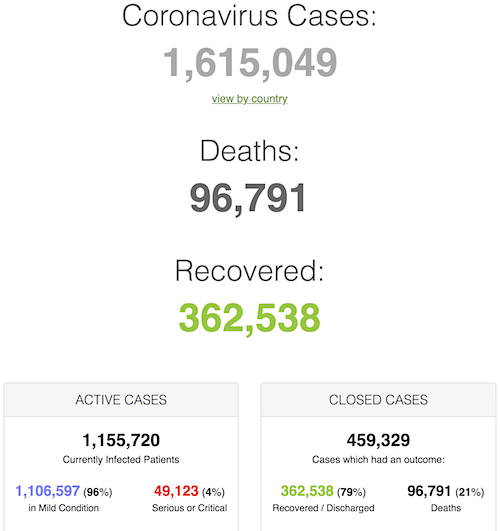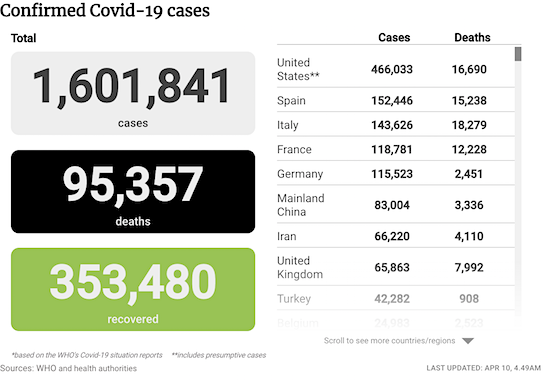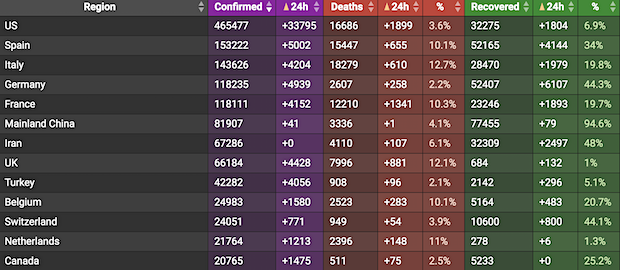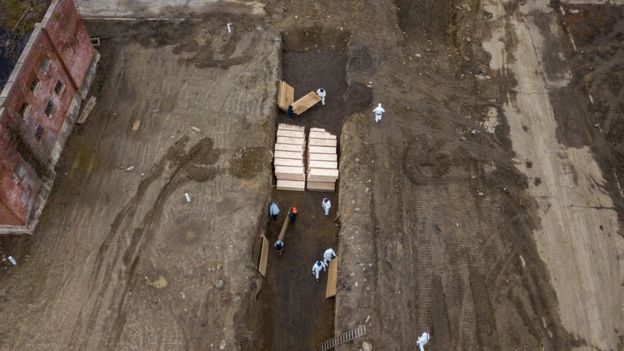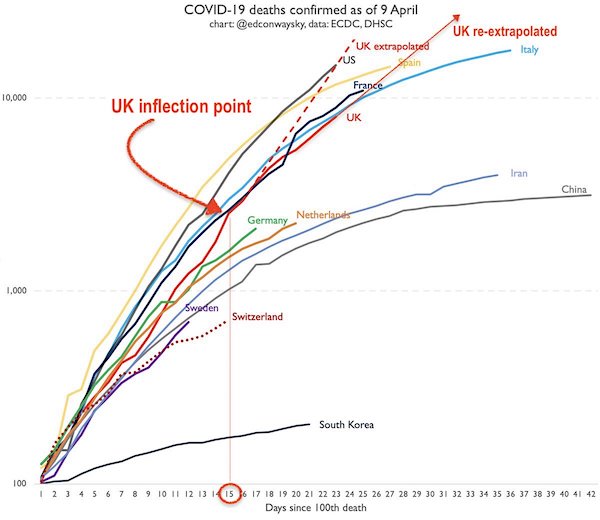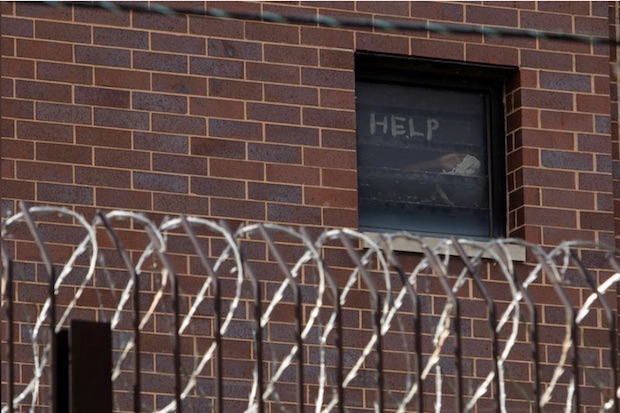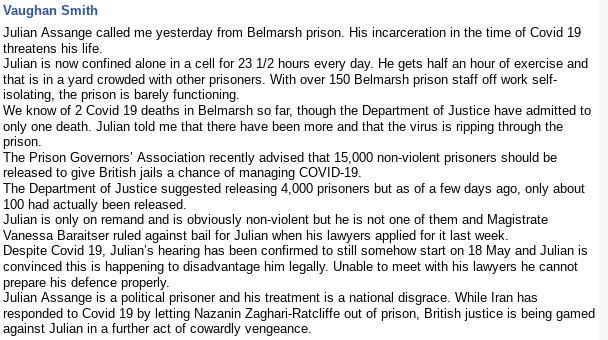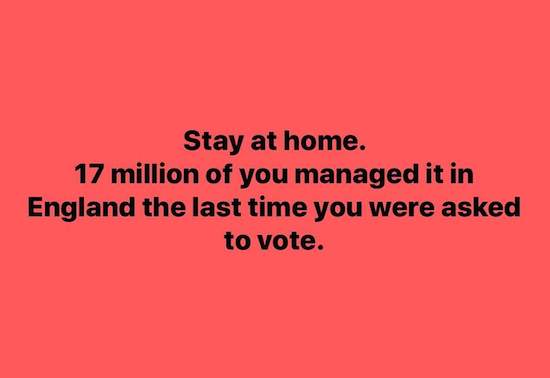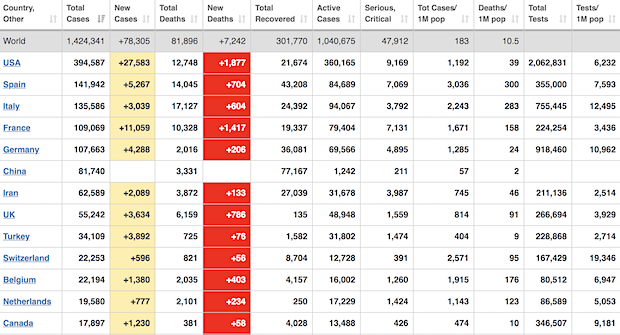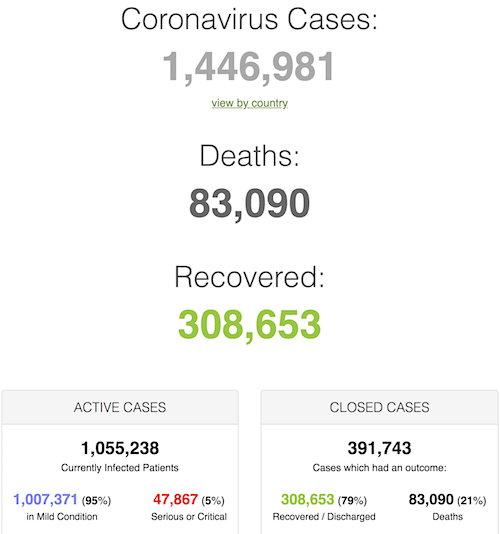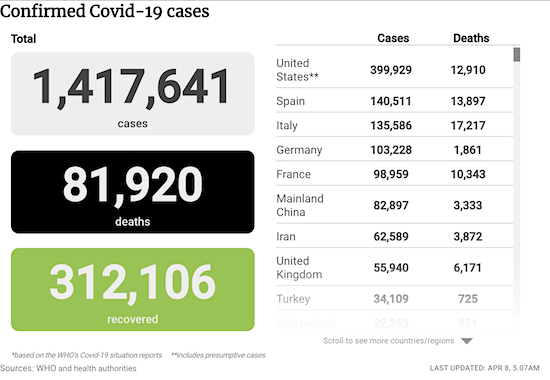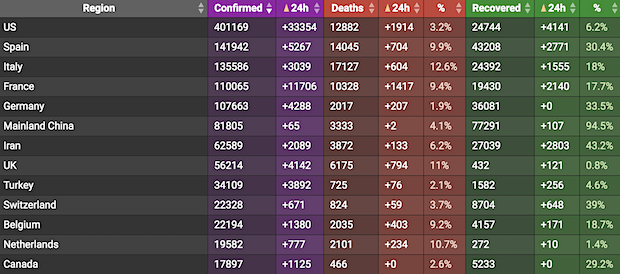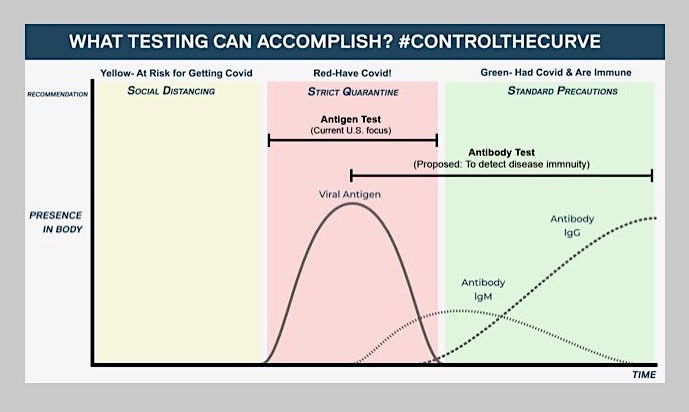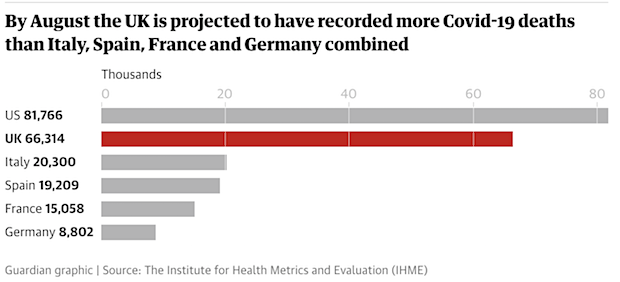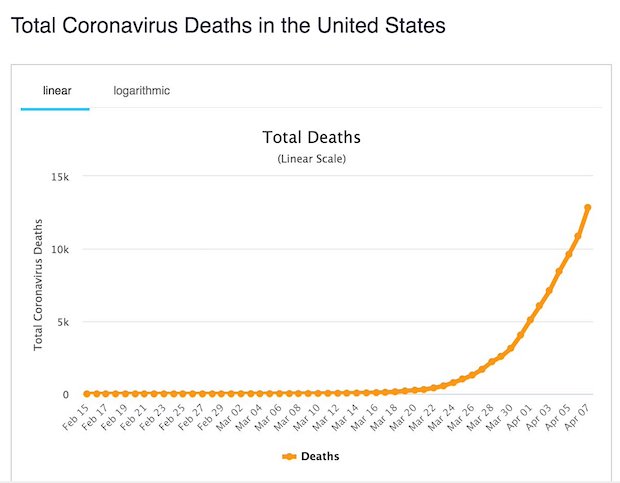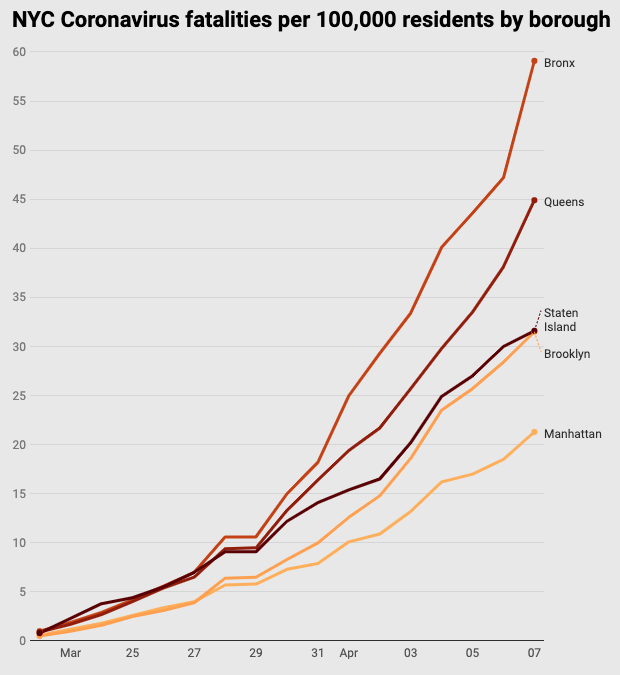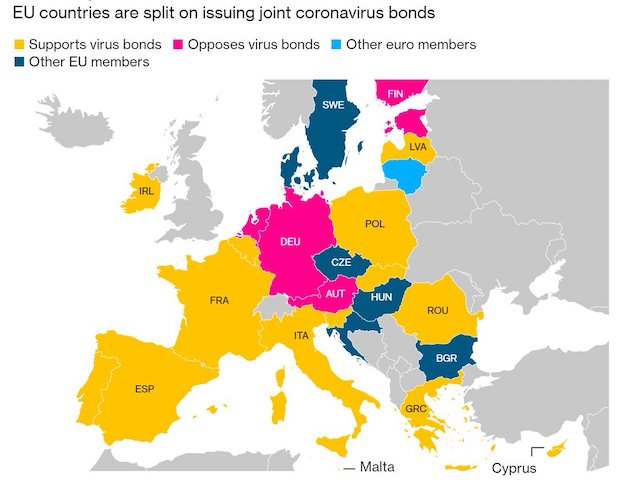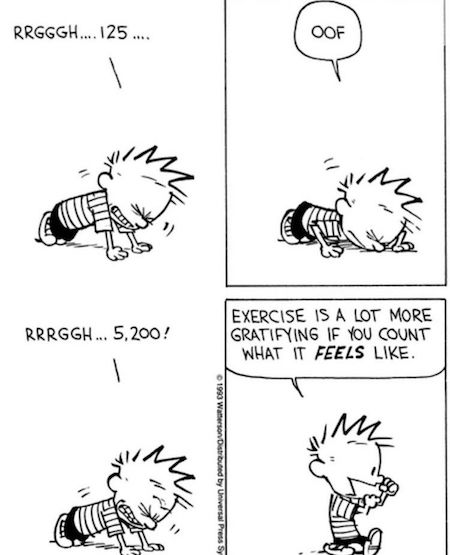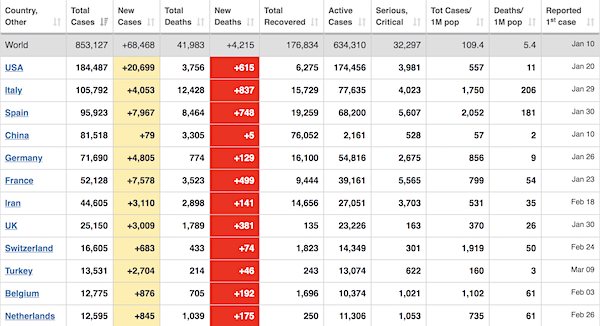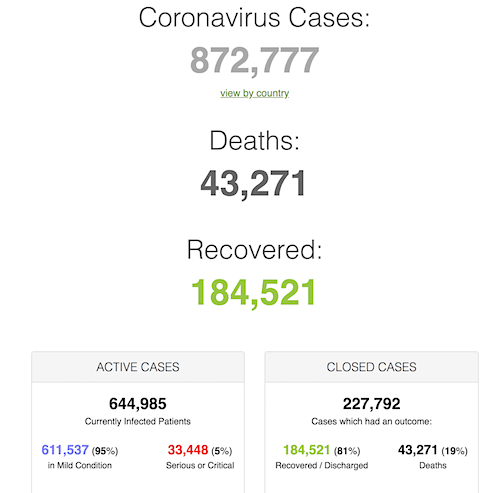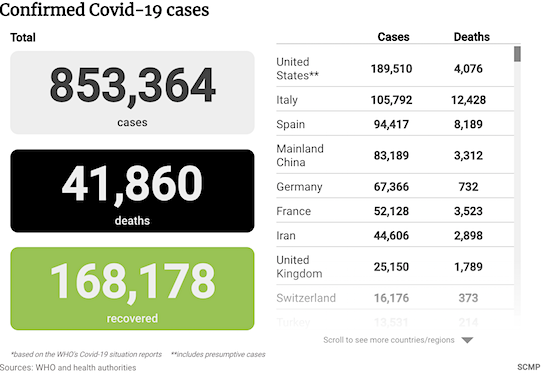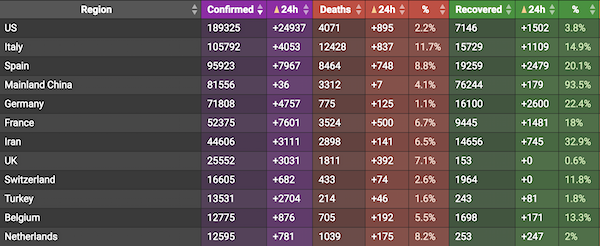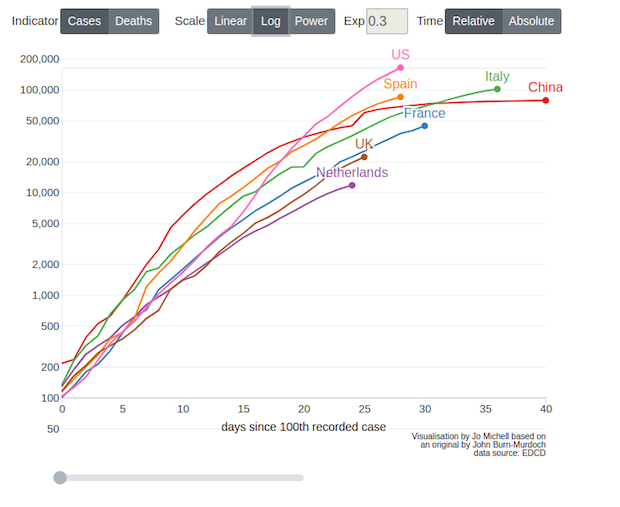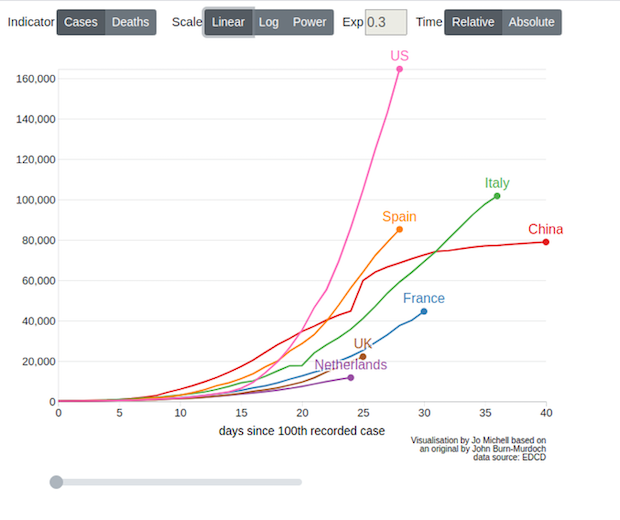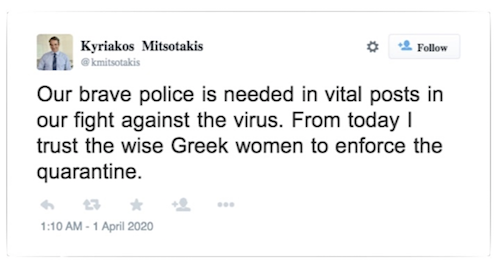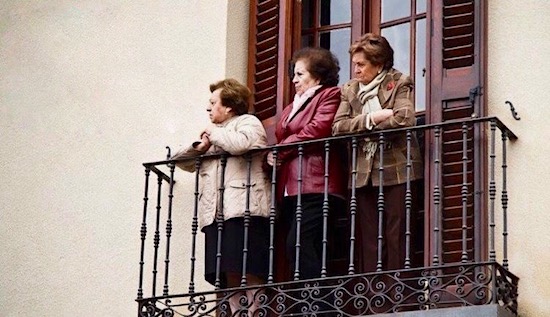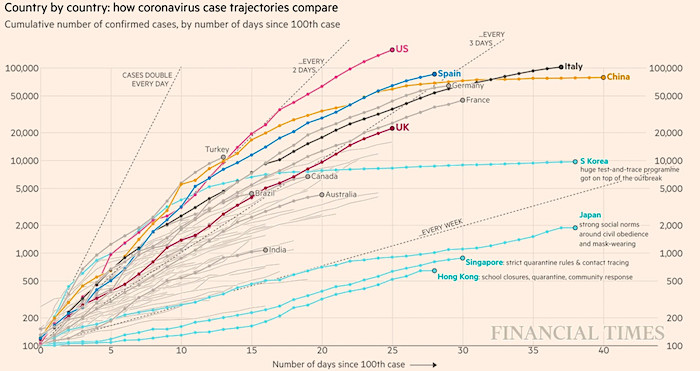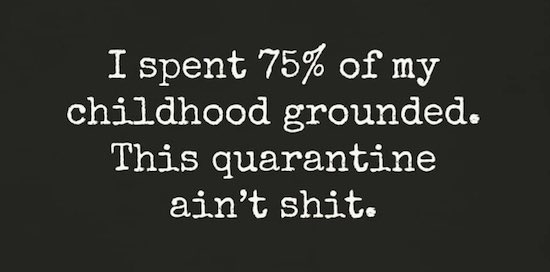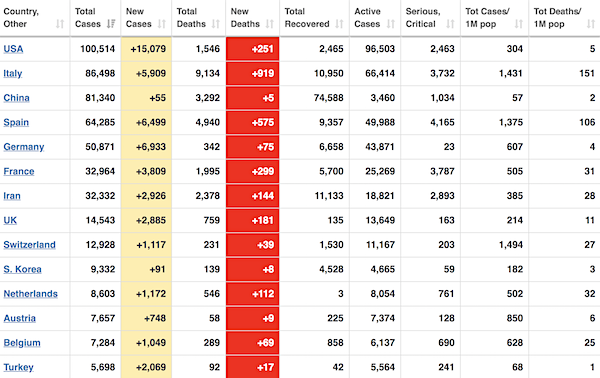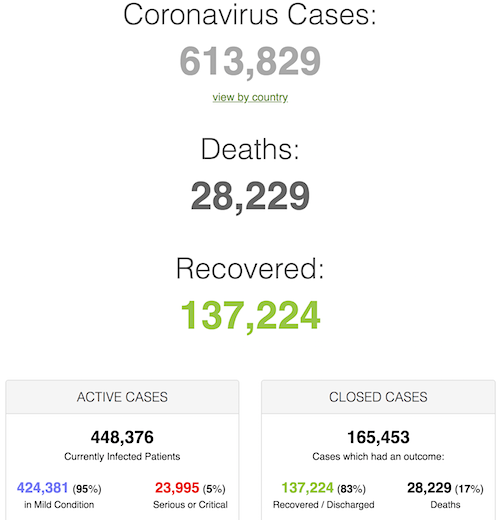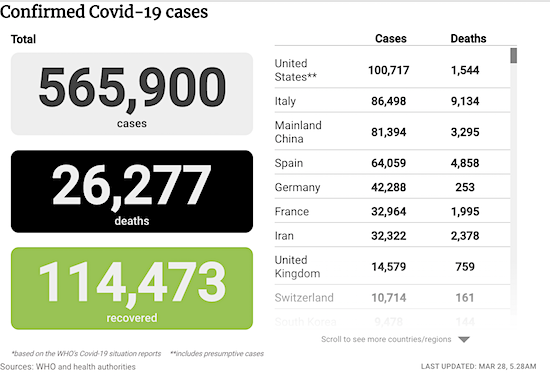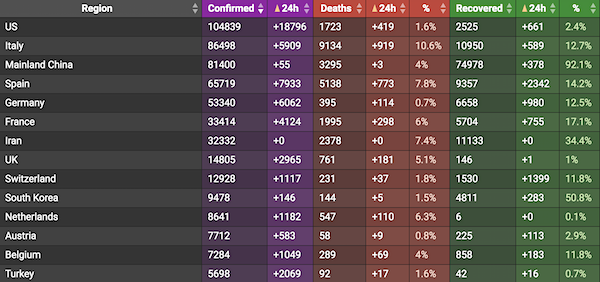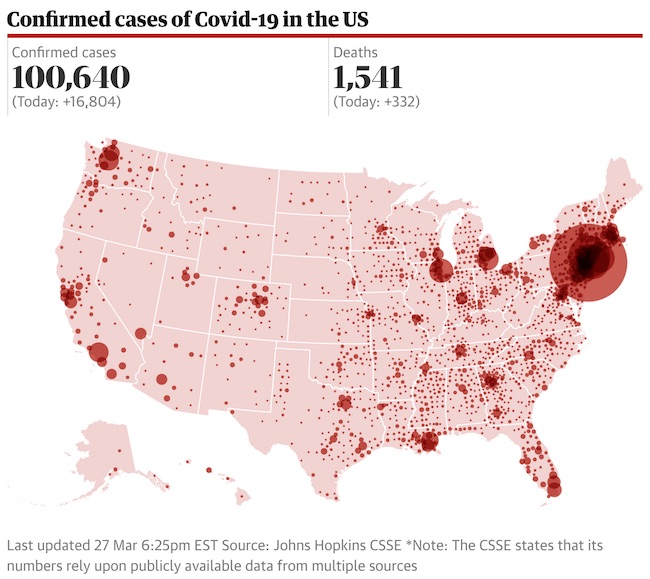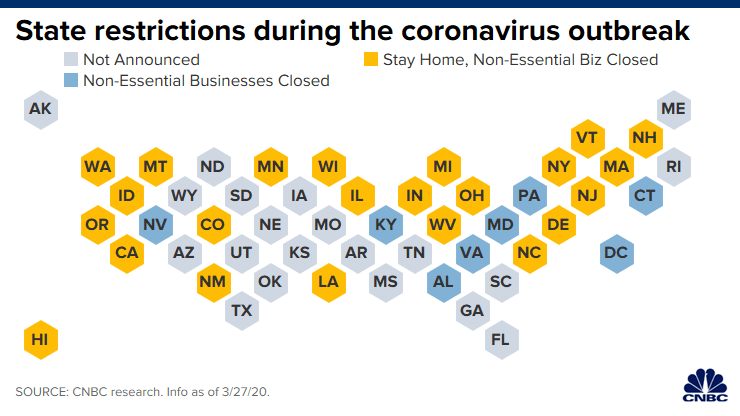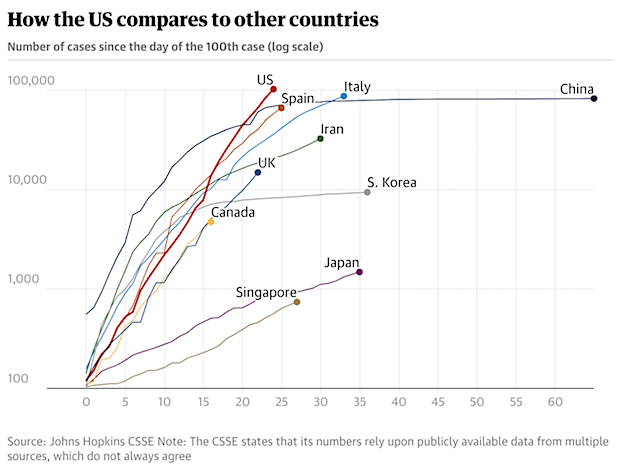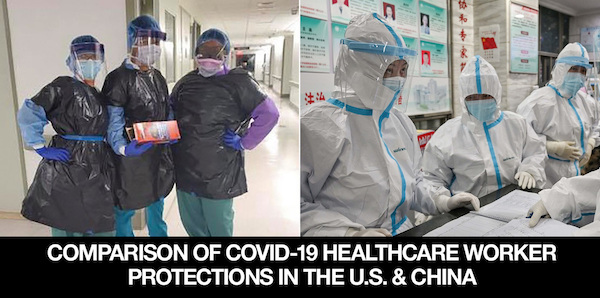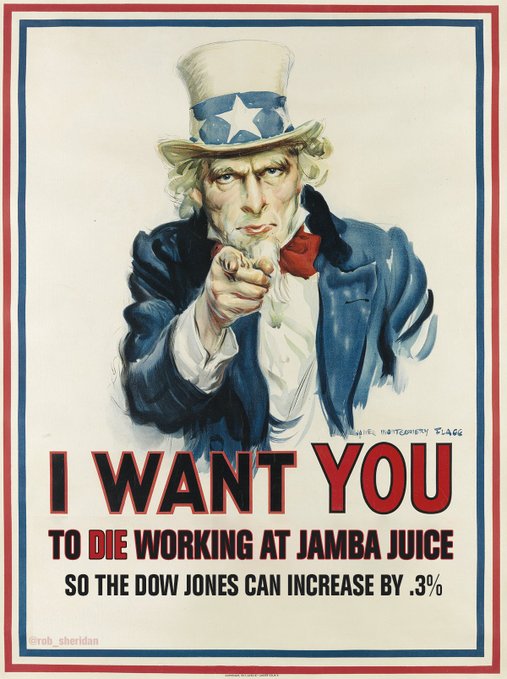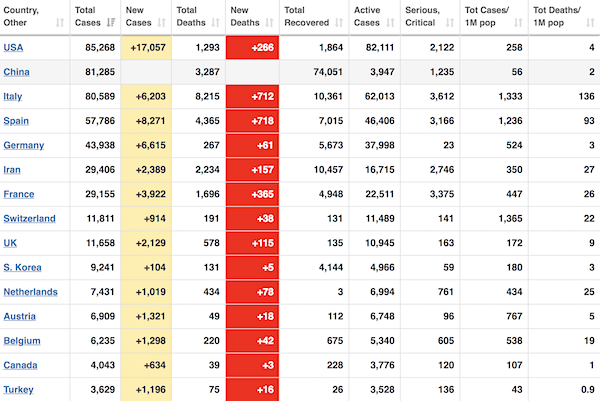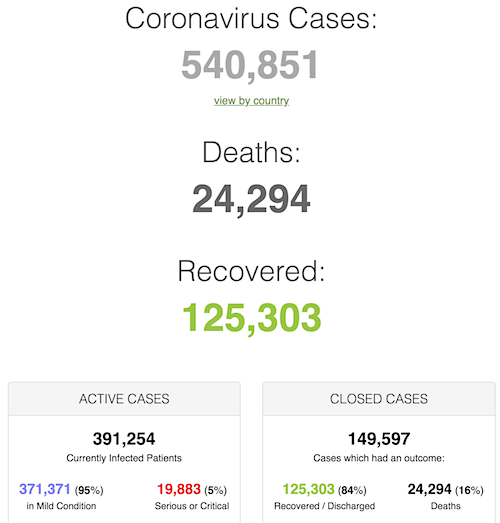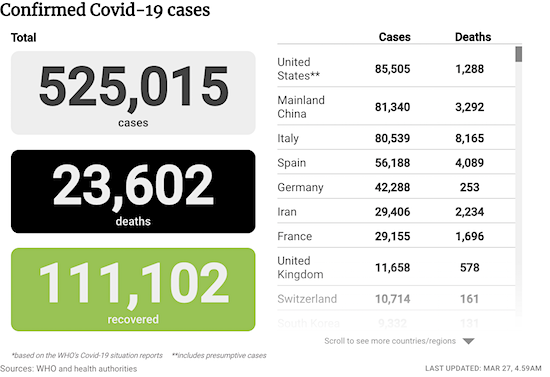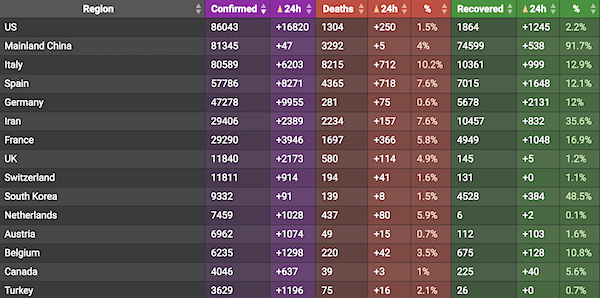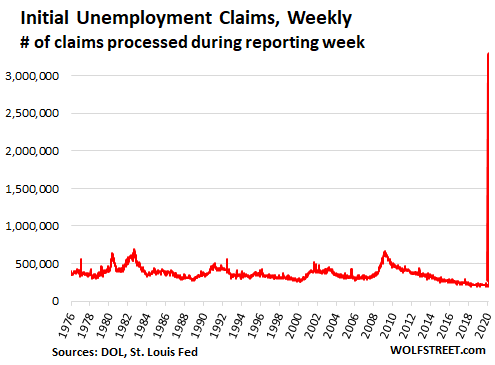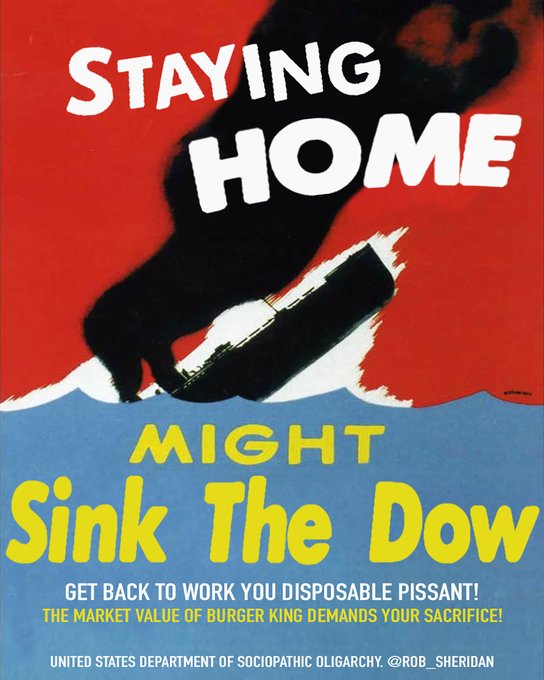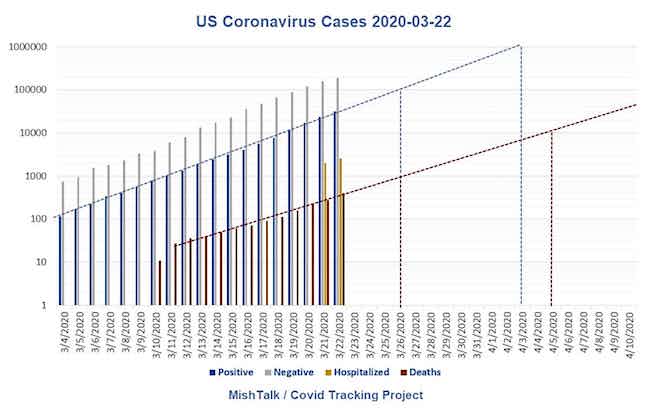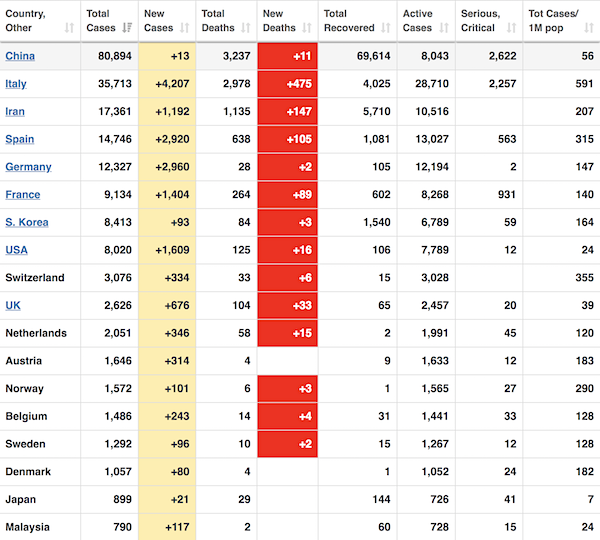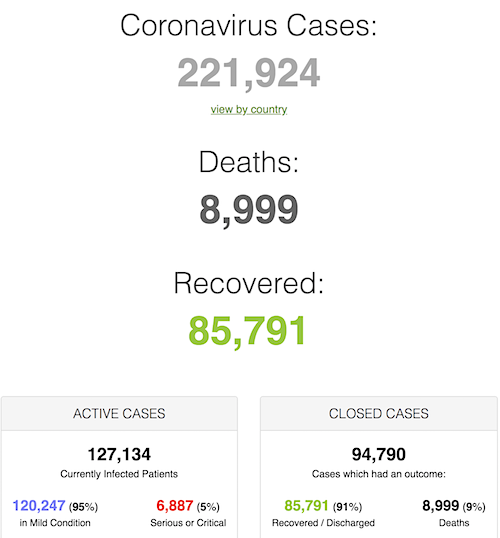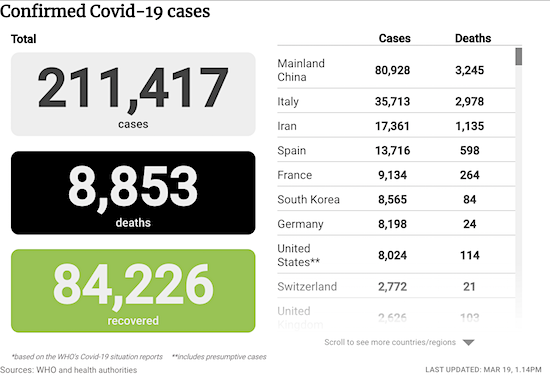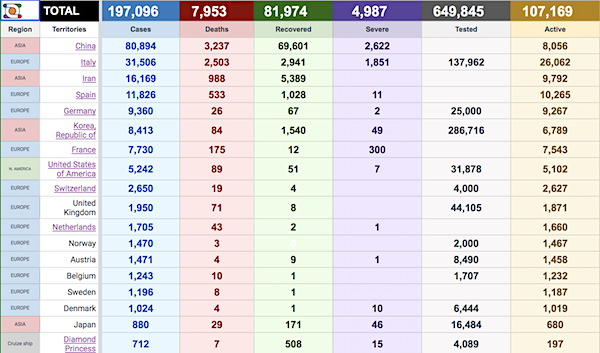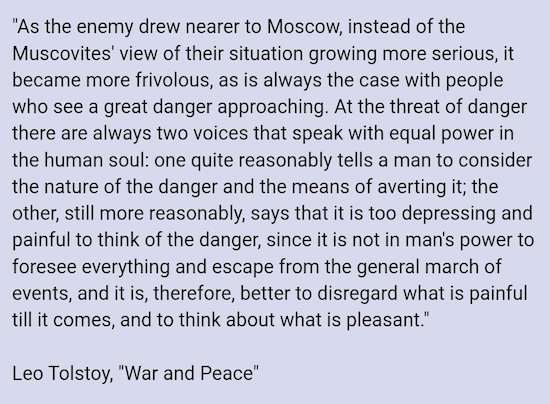
Henri Cartier-Bresson A visitor to the Forbidden City, Beijing 1948
Today, I’m going to try to show you how and why we know that in the case of a pandemic like the one we’re in, surrounded by doubts and uncertainties, there are still a series of measures that we can and, more importantly, must take. But also, how these measures are hardly ever taken, and if they are, not in the correct fashion. This has to date led us into a ton of preventable misery and death. If only we would listen. And there’s still more we can do to prevent more mayhem, there is at every step of the process.
It took me a while to get this together. But in the end I wound up with the only COVID19 analysis that makes sense. It doesn’t leave much room for discussion, at least not in the steps needed to be taken in order to tame the virus (I despise the war analogies everyone uses, taming sounds much better). How to fill in those steps once they have -kind of- been taken is another matter.
I’ve been reading up on this for a while, adding -much- more stuff as I went along (this will be a long essay), and at some point realized that the coronavirus is an issue you can’t leave to epidemiologists and virologists, because there are far too many unknowns for them to create a working model, and without such a model they are lost. These fine people are not good at 10-dimensional chess, even if they like you to think otherwise.
These people are useful for the knowledge they possess of past epidemics, not for predicting what will happen in the next one, certainly not if it’s caused by a virus which they -and we- simply don’t know enough about to build a reliable model. In that case, you need to step back and apply more basic principles. Lucky for us, those exist.
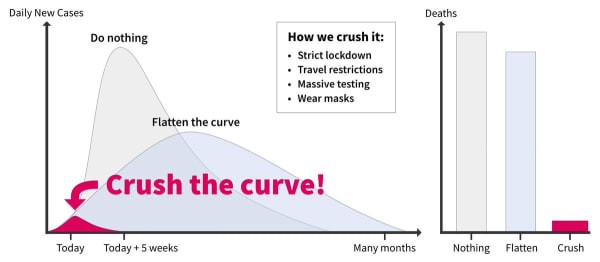
This leads us into a territory that is not familiar to epidemiologists and virologists. Since a virus, and a pandemic, like the one we’re in the middle of, is linked to so many different facets and factors, and so many uncertainties, it takes us into the territory of risk management, assessment, engineering, and from there eventually pretty seamlessly into complex systems.
If you can’t know what will happen next because you can’t oversee the multitude of variables involved, and there are no models that can do so either, the best -only- thing you can do is to halt the growing complexity as soon as you are able to, in order to create a situation, an environment, which the epidemiologists and virologists DO recognize, and can work with.
That is the point where they come in, not before. At present, they are asked to do things beyond their knowledge. And, typical human trait, they don’t tend to acknowledge that. Well, there’s a second reason: some actually think they do understand. The outcome is the same: we- and they- are led astray, away from science and into “scientism” (more on that in a moment).
Which would be fine if this concerned just a hobby, or even if it was only an academic paper left to discuss in classrooms and web forums. But we are talking about 10s of 1000s of deaths, 100s of 1000s of gravely ill people, and in the wake of that an economy as much in need of assisted breathing as the human patients involved.
Lucky for us, we have people who DO understand these things. Unlucky for us, our “leadership” doesn’t listen to them. They think that an epidemiologist or two, three, should be enough. But neither the “leaders” nor the epidemiologists understand the limits every single scientific field has. They don’t understand what happens when scientists venture out of their chosen field. And most of all, they don’t understand what complex systems are.
Please note that the above also means that any and all virus modeling going forward should be taken with an ocean full of salt. We get new examples every day of “qualities” of the virus that are not in any models. Where the virus originated, asymptomatic patients, re-infection, huge discrepancies in ‘modeled’ numbers predicted vs factual ones, Asians vs whites, blacks vs whites, men vs women, smokers vs non-smokers, chloroquine (non-)effectiveness, contagiousness, the list goes on for miles.
There is a way to leave those discussions, based on, we must admit, far too little verifiable information, leaving us groping in the pitchblack, behind for now.
Most people who read a site like the Automatic Earth, where finance is a main topic, will know who Nassim Nicholas Taleb is, for instance because he wrote The Black Swan before the 2008 financial crisis. Or because a hedge fund he advises recently announced a 6,000%+ gain in “virustime”. But Taleb is also, and more interesting for this essay, “distinguished professor of risk engineering at New York University’s Tandon School of Engineering”.
For much of his coverage of COVID19, Taleb has been co-operating with Yaneer Bar-Yam, president of the New England Complex System Institute, and Joseph Norman, a postdoctoral researcher at the same New England Complex System Institute. That means “real scientists”, just not from where you might expect. Which in turn means they can help the other guys get out of the ditch they’re in.
I’ll refer to “Taleb” here, nice and short, but that often means his co-operators too. Key terminology you’ll find, and need, is “asymmetry”, “precautionary principle” (“first do no harm”, which is close to the Hippocratic Oath’s “to abstain from doing harm”), and perhaps also “convexity” (a term from the finance world that depicts a relation between interest rates and bond duration).
First, here are a few bits from a piece the three wrote on January 26, to get you familiar with some of the ideas. These are ground rules for approaching a pandemic such as this one, but they are also ground rules for -any- other problems with too many unknown variables.
This is crucial because it denotes that if you have a disease that is both contagious and deadly, you don’t -have to- first wait and (build a model to) see how deadly and contagious it is, as an epidemiologist is wont to do, you can act right off the bat. Of course the scientists at the WHO and various government know this basic stuff, but they still haven’t acted accordingly. On January 26 and after, the ground rules were ignored.
So then you’re forced into the next basic steps. Still -mostly- not an epic disaster, but surely an unnecessary -and potentially deadly- risk. Taleb doesn’t take prisoners, and labels the WHO “criminally incompetent”. And I fully agree: they get paid billions a year to be the world’s ears and eyes in case a new disease pops up somewhere, and they have still let it happen. Here’s that first bit:
Systemic Risk Of Pandemic Via Novel Pathogens – Coronavirus: A note
General Precautionary Principle : The general (non-naive) precautionary principle [3] delineates conditions where actions must be taken to reduce risk of ruin, and traditional cost-benefit analyses must not be used. These are ruin problems where, over time, exposure to tail events leads to a certain eventual extinction. While there is a very high probability for humanity surviving a single such event, over time, there is eventually zero probability of surviving repeated exposures to such events. While repeated risks can be taken by individuals with a limited life expectancy, ruin exposures must never be taken at the systemic and collective level. In technical terms, the precautionary principle applies when traditional statistical averages are invalid because risks are not ergodic.
Spreading rate : Historically based estimates of spreading rates for pandemics in general, and for the current one in particular, underestimate the rate of spread because of the rapid increases in transportation connectivity over recent years. This means that expectations of the extent of harm are underestimates both because events are inherently fat tailed, and because the tail is becoming fatter as connectivity increases. Global connectivity is at an all-time high, with China one of the most globally connected societies. Fundamentally, viral contagion events depend on the interaction of agents in physical space, and with the forward-looking uncertainty that novel outbreaks necessarily carry, reducing connectivity temporarily to slow flows of potentially contagious individuals is the only approach that is robust against misestimations in the properties of a virus or other pathogen.
Asymmetric Uncertainty : Properties of the virus that are uncertain will have substantial impact on whether policies implemented are effective. For instance, whether contagious asymptomatic carriers exist. These uncertainties make it unclear whether measures such as temperature screening at major ports will have the desired impact. Practically all the uncertainty tends to make the problem potentially worse, not better, as these processes are convex to uncertainty.
Conclusion : Standard individual-scale policy approaches such as isolation, contact tracing and monitoring are rapidly (computationally) overwhelmed in the face of mass infection, and thus also cannot be relied upon to stop a pandemic. Multiscale population approaches including drastically pruning contact networks using collective boundaries and social behavior change, and community self-monitoring, are essential. Together, these observations lead to the necessity of a precautionary approach to current and potential pandemic outbreaks that must include constraining mobility patterns in the early stages of an outbreak, especially when little is known about the true parameters of the pathogen.
It will cost something to reduce mobility in the short term, but to fail do so will eventually cost everything—if not from this event, then one in the future. Outbreaks are inevitable, but an appropriately precautionary response can mitigate systemic risk to the globe at large. But policy- and decision-makers must act swiftly and avoid the fallacy that to have an appropriate respect for uncertainty in the face of possible irreversible catastrophe amounts to “paranoia,” or the converse a belief that nothing can be done.
As you can see, that already contains the next steps in case the initial response is warped (it has been). An expensive failure, but not necessarily an all too fatal one yet. Missing the next steps as well, though, turns this into a whole other story, and one that must be familiar to you, because you’re living it.
Yaneer Bar-Yam on March 23 gave it another try when he wrote in USA Today that “We Need An Immediate Five-Week National Lockdown To Defeat Coronavirus In America”. We know how that went (I don’t really have space to include that piece). According to this little graph I picked up last week, the US is barely 50% locked down. And that’s not going to cut it.
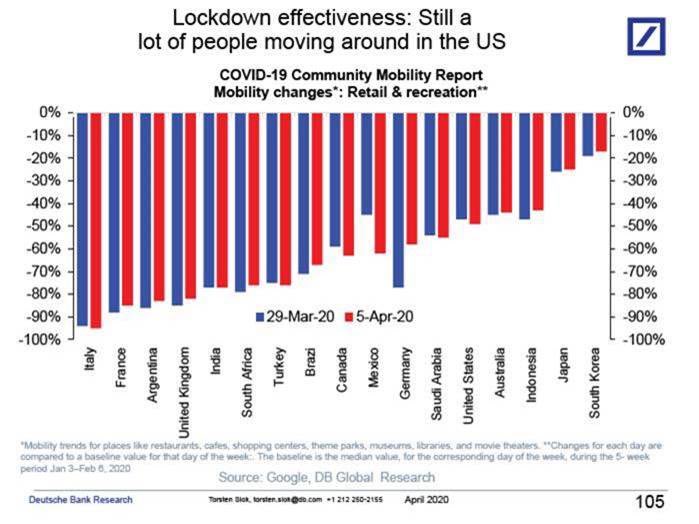
Two days after Yaneer Bar-Yam’s USA Today article, Taleb and Bar-Yam had a piece in the Guardian, which focused on the UK situation. And guess what? Nobody listened, again. You have to understand, these guys are perceived by the “science crowd” in “epidemic land”, who demand to be seen as the ultimate authorities on the topic, as big threats to their perceived power.
The last thing the “science crowd” want is for a bunch of complex systems guys, who they don’t understand anyway, to upstage them. And granted, the headline alone is ample threat to the UK government’s scientific advisers. But that attitude leads to more entirely preventable deaths; as I said above, the epidemiology etc. crowd simply lack the knowledge that the risk engineers do have, and which could help them prevent those deaths.
Something related, before I forget: I’ve been following Nassim Taleb’s opinions on genetically modified organisms (GMO) for a long time, because in that field, too, he applies the same ground rules that he does vis-a-vis the virus. First, precautionary principle (do no harm), and in the wake of that, asymmetry (asymmetric risk). In “Monsanto’s GMO field”, just like with deadly viruses, the risks when something goes wrong are devastating. If you get that wrong, you’re literally talking potential extinction.
And that makes any “normal” cost/benefit analysis obsolete. If you get the preliminary risk assessment wrong, the consequences are so far-reaching that your only realistic option is extreme carefulness (precautionary principle). Ergo: you don’t allow GMO crops until you’re 100% sure they have zero negative impacts on human health. What Monsanto does is use “scientists” who declare that no negative effect has been found so far, so it must be okay.
Taleb asserts that that is not science, but “scientism”. It is obvious that the negative effects can take decades to show, but if they do, things have probably become irreversible (all corn contains GMO traces). In other words, the burden of proof MUST lie with Monsanto; you can’t demand that everybody else proves their GMO crops are harmful. On the one hand, Monsanto gets to make a profit, while on the other billions of human lives can get lost. That’s the asymmetry Taleb is talking about.
Labeling any such deliberation, any such cost-benefit analysis, scientific, is an affront to any- and everybody’s intelligence. There are things that you cannot afford to take risks with. Mankind, the animal kingdom, the planet, are some of these things. You can’t argue that a lockdown might cost jobs if and when a non-lockdown will cost lives; you can’t argue for measures that kill people.
The only thing we can really do is to apply those measures that best mitigate job losses, not the ones that keep jobs but mitigate loss of life. It’s not even an actual choice; it’s a false dichotomy, because the risk of consciously allowing people to continue to infect others who may then die, which you could have prevented from happening, is so much greater than the loss of a job. The risk is asymmetric. A job is not a life.
It’s nuts to argue that we should allow someone to die because his/her neighbor might lose their job or because his/her neighbor beats his wife. In case someone loses their job, a government can issue a bailout or even a UBI. That they don’t do that and/or not properly, is another matter. But not one that justifies murder.
And you can’t take the conscious risk of letting people die because someone married an abusive person either. Yaneer Bar-Yam wrote some good stuff on community efforts with regards to COVID19, to be found at the New England Complex System Institute site, which might help in that regard. But you can’t aim for letting a deadly virus spread in order to prevent joblessness, loneliness or poor -life- choices.
Back to Taleb and Bar-Yam’s March 25 piece in the Guardian. I have a hard time selecting only some of it, a general problem with well-written essays.
The UK’s Coronavirus Policy May Sound Scientific. It Isn’t
When, along with applied systems scientist Dr Joe Norman, we first reacted to coronavirus on 25 January with the publication of an academic note urging caution, the virus had reportedly infected fewer than 2,000 people worldwide and fewer than 60 people were dead. That number need not have been so high [..] Our research did not use any complicated model with a vast number of variables, no more than someone watching an avalanche heading in their direction calls for complicated statistical models to see if they need to get out of the way.
We called for a simple exercise of the precautionary principle in a domain where it mattered: interconnected complex systems have some attributes that allow some things to cascade out of control, delivering extreme outcomes. Enact robust measures that would have been, at the time, of small cost: constrain mobility. Immediately. Later, we invoked a rapid investment in preparedness: tests, hospital capacity, means to treat patients. Just in case, you know. Things can happen. The error in the UK is on two levels. Modelling and policymaking.
First, at the modelling level, the government relied at all stages on epidemiological models that were designed to show us roughly what happens when a preselected set of actions are made, and not what we should make happen, and how. The modellers use hypotheses/assumptions, which they then feed into models, and use to draw conclusions and make policy recommendations.
Critically, they do not produce an error rate. What if these assumptions are wrong? Have they been tested? The answer is often no. [..] Risk management – like wisdom – requires robustness in models. But if we base our pandemic response plans on flawed academic models, people die. And they will.
This was the case with the disastrous “herd immunity” thesis. The idea behind herd immunity was that the outbreak would stop if enough people got sick and gained immunity. Once a critical mass of young people gained immunity, so the epidemiological modellers told us, vulnerable populations (old and sick people) would be protected. Of course, this idea was nothing more than a dressed-up version of the “just do nothing” approach.
Individuals and scientists around the world immediately pointed out the obvious flaws: there’s no way to ensure only young people get infected; you need 60-70% of the population to be infected and recover to have a shot at herd immunity, and there aren’t that many young and healthy people in the UK, or anywhere. Moreover, many young people have severe cases of the disease, overloading healthcare systems, and a not-so-small number of them die. It is not a free ride.
This doesn’t even include the possibility, already suspected in some cases, of recurrence of the disease. Immunity may not even be reliable for this virus. Worse, it did not take into account that the duration of hospitalisation can be lengthier than they think, or that one can incur a shortage of hospital beds.
[..] No 10 appears to be enamoured with “scientism” – things that have the cosmetic attributes of science but without its rigour. [..] Social science is in a “replication crisis”, where less than half the results replicate (under exact same conditions), less than a tenth can be taken seriously, and less than a hundredth translate into the real world. So what is called “evidence-based” methods have a dire track record and are pretty much evidence-free.
[..] when one deals with deep uncertainty, both governance and precaution require us to hedge for the worst. While risk-taking is a business that is left to individuals, collective safety and systemic risk are the business of the state. Failing that mandate of prudence by gambling with the lives of citizens is a professional wrongdoing that extends beyond academic mistake; it is a violation of the ethics of governing. The obvious policy left now is a lockdown, with overactive testing and contact tracing: follow the evidence from China and South Korea rather than thousands of error-prone computer codes.
If that’s not sufficient, here’s Taleb in a March 31 Bloomberg interview. Please watch:
And just in case it’s still not clear, I have collected a series of Taleb tweets that should make his position that much clearer. That is, after we failed to halt the virus while we could, thanks to China, the WHO and your own government, in that order, mass mask wearing is inevitable -because not doing so involves an asymmetric risk: even the worst mask reduces infection rates by 30%, and if both people involved in an interaction wear one, that may be 90%.
In that same vein, you need mass testing. And reliable testing, which is still not a given. These are things that people like to question, but those people are in the wrong time capsule. The proper time for that was December in China, and perhaps January in Europe and the US. Not now. Now you can only save what you can save, and that inevitably means taking measures that appear drastic. But which will look walk-in-the-park-ish compared to what follows if you don’t take them.
Tweets first; please do read them all. Note: Fat Tony is Taleb’s best friend and alter ego, and there’s controversy about whether he actually exists. For what it’s worth, I agree with Fat Tony that we don’t need a conspiray theory to explain COVID19, we have a virus that is deadly and highly contagious, and 1000s of scientists and politicians who have no idea what they do.
Those are all the basic ingredients you need for absolute mayhem. Not that all theories, whether it’s glyphosate or 5G, China lab or US lab, intential release or not, are necessarily wrong or baseless, but because in the face of a virus that doesn’t need any of these things to replicate the way COVID19 has, you need to come up with very solid proof. And I have seen none, just plenty theories.

Fat Tony don't believe much in conspiracy theories.
Why?
The "geniuses" at the top have proven time and time again they're too stupid to pull anyting that elaborate off… https://t.co/q9DllGX7IJ
— Fat Tony (@FattestFatTony) March 27, 2020
Now I am not saying that masks work there, rather that owing to an asymmetry you MUST wear one. Decision-making in real life is based on asymmetries. That's the entire message of the Incerto!
— Nassim Nicholas Taleb (@nntaleb) March 31, 2020
Rightwing sociopathic quacks like @BjornLomborg: are ALWAYS on the wrong side of things precautionary, (including climate).
Saying "no worse than the flu" was ignorant 3 months ago; saying it after data from the past few weeks is outright malfeasance.@Twitter blocks fakenews. https://t.co/ENVjCWG00P
— Nassim Nicholas Taleb (@nntaleb) April 10, 2020
and… the NYT and science journos and ignorant "evidence based" epidemiologists who can't read absence of evidence got us here.
Don't blame mayors who shut down cities, blame misinformation about masks and mobility. Blame the New York Times.— Nassim Nicholas Taleb (@nntaleb) April 12, 2020
MASKS
One comment about masks and nonlinearities that these imbeciles are not getting.Reducing exposure to viruses by 30% thanks to an "imperfect" mask does not mean reducing risk of contracting the disease by just 30%. By convexity, it must be more than 30%, can even be 95%.
— Nassim Nicholas Taleb (@nntaleb) April 12, 2020
Friends, another robust question to get the convexity.
How many people contracted COVID while wearing surgical masks? How many w/N95? How many with cowboy scarves?
(Assume for now homogeneity. We are looking for convexity, not measurement).— Nassim Nicholas Taleb (@nntaleb) April 13, 2020
We need to get the probability of getting sick at different concentration of droplets.
We could probably back it up (or get a handle on the convexity) from country data (Czech republic).
Intuition: reduction of 70% of particles is yuuuge: home masks should work. Plus if 2-way! pic.twitter.com/Fd4nQ8Pxmr— Nassim Nicholas Taleb (@nntaleb) April 13, 2020

I don’t know about you, but where I am right now, Holland, there are no masks available on a grand scale. There is so little testing going on in large parts of the West that even medical personnel often go without testing. I would love to be tested, if only so I know I either can or can’t infect people, but who am I to take away a test from a nurse, even if I could?
And this happens 3+ months after all our governments should have made testing and masks for everyone their no. 1 priority. And that was onnly after they failed to crush the curve when they could have.
Donald Trump was talking over the weekend about the “biggest decision of his life”, referring to the moment the US economy could be re-opened. Trump, as well as all the other “leaders”, even if their science advisers don’t like it one bit, or maybe because of it, should contact Nassim Taleb and the risks scientists he works with, within the next 5 minutes.
What is happening right now is not because all the epidemiologists and virologists around the world are wrong, but because they’re asked to make decisons and construct models about something they don’t know nearly enough about.
Call Taleb, Donald, Emmanuel, Shinzo, Angela et al. If you care enough about the lives of your people. I see a lot of rational-looking measures today, in all the lockdown variations, but I also see many countries and states clamoring for peaks to be called, and subsequent calls galore for less stringent lockdown measures. Decisions prone to be taken by politicians and epidemiologists who are -way- out of their league.
Please be careful. Call Taleb. You have nothing -more- to lose.

We would like to run the Automatic Earth on people’s kind donations. Ads no longer pay for all you read, your support has become an integral part of the process. Which really should be liberating.
Thanks everyone for your generous donations.

Support the Automatic Earth. It’s good for your physical and mental health.



